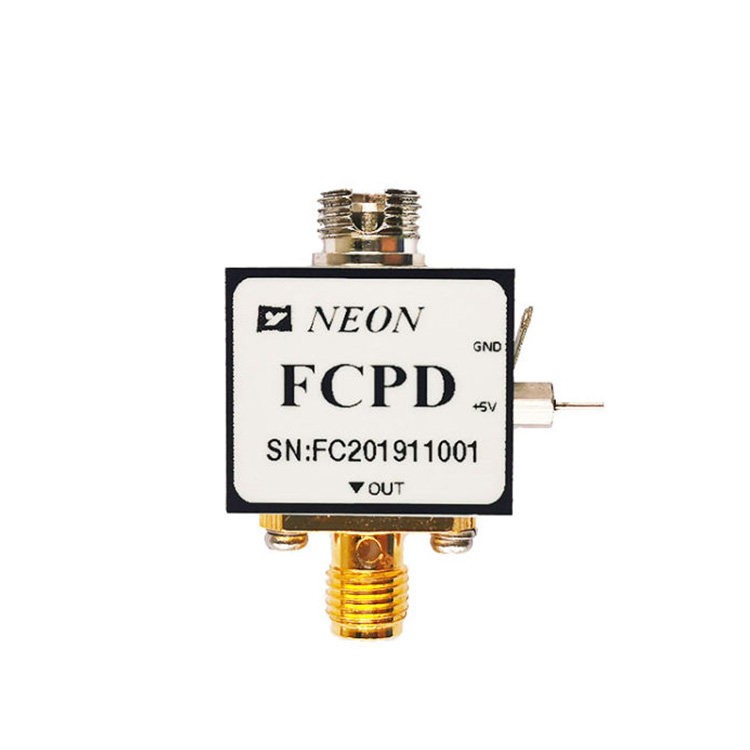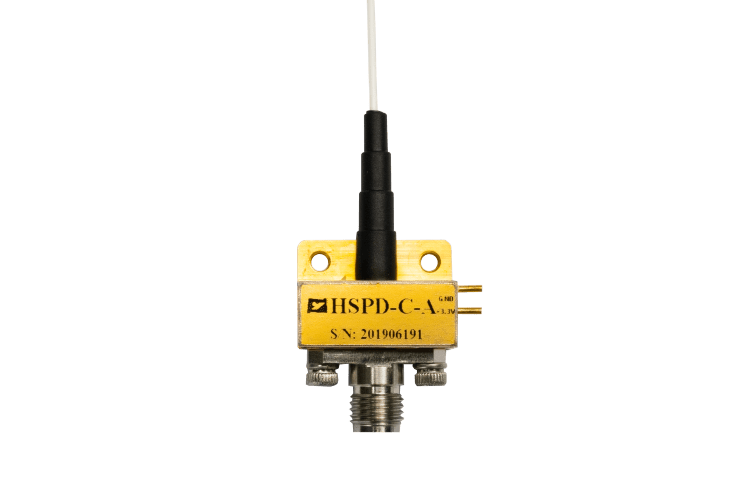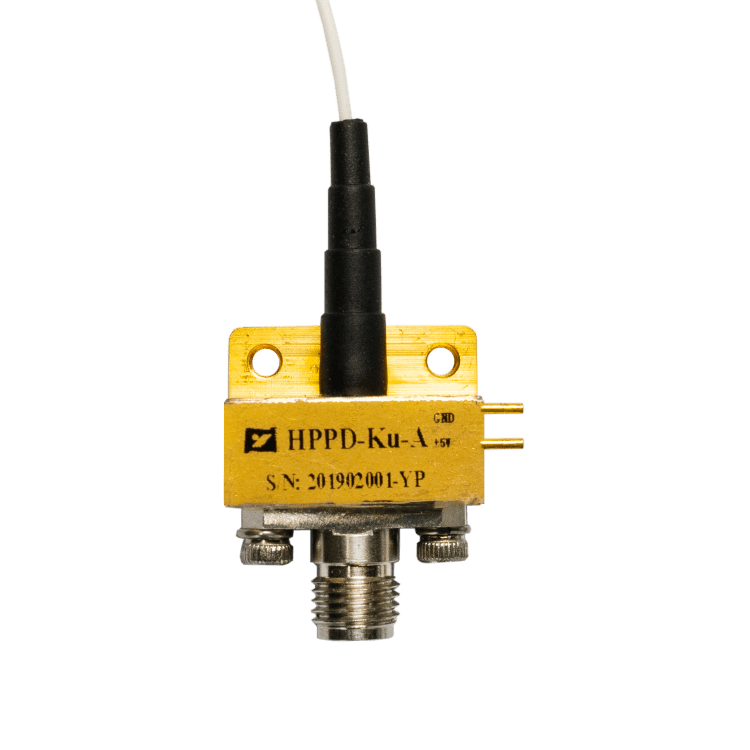Multichannel vs. Single-Channel Photodetector: Key Differences and Applications
A photodetector is the first device that changes light into electric signals, thus interfacing light systems with electric ones, which is quite important in all optical systems. In more advanced forms of photodetectors, we now implement them into scientific devices, imaging systems, industrial fibers, and especially in photonics devices. One of the characteristics that photodetectors emphasize is the separate device single-channel and multichannel configurations. Each of them is designed for specific operational tasks. Understanding these devices’ structure and operational differences, and the applications, is vital in maximizing photodetectors’ performance within an optical system.

Part 1: What is a Single-Channel and Multichannel Photodetector?
A single-channel photodetector has the typical characteristics of a photo sensor which receives light from a predefined area and converts the light energy into electrical energy in either current or voltage form. Since the device has only one output channel, it is adequate for typical applications involving the measuring and recording of the optical power or light of a specific wavelength. Including to the rest, typical devices are photodiodes, avalanche photodiodes (APDs), and photomultiplier tubes (PMTs).
As for multichannel photodetectors, they are made up of an an array of various types of light sensitive devices integrated together on one substrate.. Each unit is referred to as a “pixel” and is treated as an independent channel for detection. Examples of devices of this kind are CCD (Charge-Coupled Device), CMOS (Complementary Metal-Oxide Semiconductor) and photodiode arrays (PDAs). Their ability to capture light concurrently in space and in different spectrums enables multidisciplinary imaging, spectrographic analysis, and wavelength division multiplexing (WDM) monitoring.
Part 2: Structure and Working Principle Comparison
| Aspect | Single-Channel Photodetector | Multichannel Photodetector |
| Structural Composition | Simple structure: a single photosensitive area (e.g., PIN, APD), a package, and a pair of electrodes. | Complex structure: numerous tiny photosensitive elements (pixels) integrated onto a chip in a linear or matrix arrangement. |
| Signal Output | Single Analog Signal: Outputs one current or voltage signal proportional to the total incident optical power. | Multiple/Digital Signals: Outputs signals from each pixel, typically read out sequentially through an analog multiplexer or directly digitized. |
| Readout Circuit | Simple: typically only requires a Transimpedance Amplifier (TIA) to convert current to voltage. | Complex: includes circuits for each pixel such as charge integration, amplification, sample-and-hold, and Analog-to-Digital Conversion (ADC). CMOS technology integrates these on-chip. |
| Data Processing | Simple data processing; signals can be acquired and analyzed directly with an oscilloscope or a basic data acquisition card. | Requires complex drive timing and Digital Signal Processing (DSP) to reconstruct images or spectra; typically interfaced with a computer or embedded system. |

Part 3: Key Performance Parameter Comparison
| Performance Parameter | Single-Channel Photodetector | Multichannel Photodetector | Conclusion & Analysis |
| Response Speed/Bandwidth | Extremely fast; ideal for high-frequency or pulsed detection due to low capacitance. | Slightly slower because of multiplexed readout and higher data load. | Single-Channel wins. Its simple structure and low parasitic capacitance make it ideal for optical fiber communication and pulsed laser detection. |
| Dynamic Range | Wide dynamic range; excellent linearity and low noise. | May suffer from inter-channel variation and crosstalk, but can be corrected through calibration. | Single-Channel is superior. A single, large-area element can handle more photons without saturation. A multichannel detector’s range is “per-pixel.” |
| Sensitivity | Very high sensitivity for low-light detection; used in precision metrology | Moderate sensitivity; optimized for uniformity and multi-point analysis. | Single-Channel wins. Especially in low-light scenarios, single-channel detectors (like APDs/PMTs) are unmatched. |
| Resolution | Limited to a single point or averaged area. | High spatial or spectral resolution depending on pixel arrangement. | Core advantage of Multichannel. This is the fundamental reason for their existence, providing detailed spatial and spectral information. |
| Signal Synchronization | No synchronization issue—only one channel to manage. | Requires complex timing and synchronization to ensure accurate multi-channel readout. | Single-Channel wins. All photon events are processed simultaneously. Multichannel detectors can suffer from “rolling shutter” effects with fast-moving objects. |
Part 4: Application Comparison
| Category | Single-Channel Photodetector Applications | Multichannel Photodetector Applications |
| Laser Power & Energy Measurement | Measures the total power of a single laser beam accurately. | Not typically used. |
| Photometry | Measures ambient or source light intensity. | Used for imaging brightness distributions. |
| Barcode Scanning | Reads reflected light patterns from barcodes. | N/A |
| Optical Fiber Communication | Acts as a receiver to convert single-channel optical signals to electrical form. | Monitors multiple wavelengths in WDM optical fiber systems, improving network efficiency. |
| Spectroscopy | Requires mechanical scanning for wavelength measurement. | Measures a single fluorescence signal. |
| Industrial Vision & Inspection | Used for simple detection or power monitoring. | Enables defect detection, shape recognition, and precision metrology. |
| Biological Analysis | Measures single fluorescence signal. | Reads thousands of fluorescence spots simultaneously in biochip scanning. |
| Position or Motion Detection | Used for beam alignment or pulsed laser detection. | Line-scan or area-scan cameras capture dynamic motion and beam stability. |

Part 5: Summary and How to Choose
When selecting between a single-channel photodetector and a multichannel photodetector, the choice strongly relies on the information that needs to be gathered:
If the question is “How bright is it?”, a single-channel photodetector is ideal. It offers simplicity, lower cost, high sensitivity, and rapid response — perfect for power measurements, pulse detection, and optical receivers.
If the question is “Where is it bright?” or “How does brightness vary across wavelengths or positions?”, then a multichannel photodetector is the right choice. It captures spatial or spectral information simultaneously and dramatically increases data acquisition efficiency.
Having said this, the single-channel photodetector has its place in fast, sensitive, and low-cost applications. The multi-channel photodetector, as optical systems evolve further to higher levels of integration and data throughput, will still reinforce its leading position in optical imaging, spectroscopy, and optical fiber communication monitoring.
Both technologies have become critically essential in modern photonics as they tackle different perspectives of the same reality: ultra-fast, deep, and precise measurements of light.








